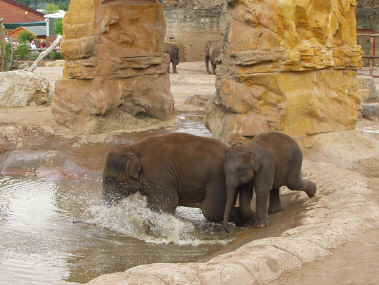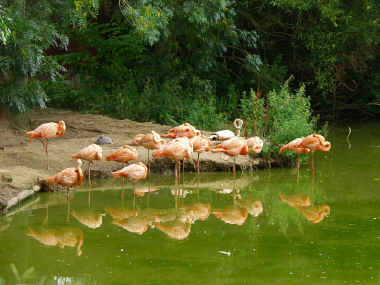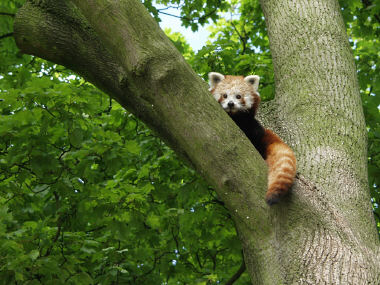Our mission is :
To support and promote conservation by breeding rare and endangered species, by excellent animal welfare, high quality public service, recreation, education and science.
Today, many of the animal species at Chester Zoo are threatened, so global breeding programmes to ensure their survival are vital. And
we don't just work with large and exotic creatures; amongst the native British species the zoo is actively supporting are Sand lizards, Mud snails, Freshwater Pearl Mussels, Crayfish, Harvest mice and Barn owls. Between 1986 and 1999 over 120 barn owls, bred at Chester Zoo, were donated to approved release schemes for reintroduction into Cheshire and neighboring counties. More recently, with the focus of Barn Owl conservation in Cheshire increasingly on barn owl habitats, the zoo plays an important educational role in explaining this work to our visitors. Sand lizards and harvest mice are also being successfully bred at Chester Zoo for release into the wild at specially selected sites. Sand lizards bred at the Zoo have been released in Wales and on the Sefton coast north of Liverpool. At the Welsh site ex-zoo lizards are now well established and producing young of their own. Experimental releases of Harvest Mice on zoo land aim to provide guidelines for future reintroductions should they ever become necessary.
In addition the Zoo's plant collections are focusing more on nationally and internationally threatened species, growing and displaying them in the Zoo, and telling people about them. The Horticulture and Botany department houses an NCCPG collection of South American orchids, and co-ordinates the Cheshire Black Poplar action plan. Native Black Poplars - which are cuttings from existing Cheshire trees, have been planted in the zoo and signs close to the young trees tell visitors all about this impressive tree.
Education
Our Education Division has a complementary role in explaining our essential work to the public. They aim to improve knowledge, awareness and attitudes, so visitors experience and appreciate the richness of the natural world, and understand and share responsibility to preserve it. At Chester Zoo the role of education in conservation is seen as essential, and with over 1 million visitors a year we believe we can really make a difference.
Through involvement in local projects and initiatives Chester Zoo demonstrates that our mission to save wildlife and habitats is just as relevant here as it is in tropical rainforests. The Zoo's land holdings extend far beyond the zoo's perimeter and include fields, ponds, woodland, and hedgerows that are managed in the interests of biodiversity conservation. We also support hedgerow recovery work conducted by the International Tree Foundation, and bat research and surveys co-ordinated by Cheshire Wildlife Trust and Liverpool Museum and facilitated by the Zoo's Twilight Zone staff.
In recent years Chester Zoo has received more than 130 awards for conservation breeding, good husbandry, zoo marketing and educational projects and continues to make major progress in animal welfare, conservation, education and science.
Contact details: Sarah Bird, tel. 01244 389448, |
 |





